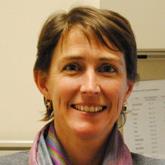When we talk about appropriate staffing, every nurse has stories to tell -- usually about shifts when staffing was not appropriate. I have my own stories, of course. My first code was when I worked on a telemetry unit, and we had three nurses and 32 patients. Honestly, I almost cried with relief when a nurse from the ICU came to transfer the patient. In contrast, later in my career, I worked a night shift in the medical ICU when we had five nurses, one assistant and 12 critically ill patients (one of whom was on CRRT and a 1:1 assignment). Amazingly, it actually worked out. All five of us had been in the ICU for more than two years, but that night we made a list of what needed to be done, a strategy that nursing students often employ when they are first learning to provide acute care. When 7 a.m. and the day-shift staff arrived, we had done it all -- every assessment, every medication, every turn, every lab, plus the hourly I&O for the patient on CRRT. It was exhausting and weirdly exhilarating.
I thought of those stories when I watched a webinar from the Advisory Board on the Experience-Complexity Gap. As the webinar explained, the crisis we face in nurse staffing is not just a lack of nurses but actually a growing gap between nursing experience and patients' complexity. That gap has increased in recent years, because newer nurses are replacing those who worked at the bedside for years, while at the same time progressive and critical care has become more complex.
The Advisory Board's Global Edition provides a graphic of the gap and suggestions that hospitals can use to address it. Their ideas include ensuring effective orientation of novice nurses, distributing experience across units and shifts (consider weekends as well as evening and night shifts), and giving competent and proficient newer nurses access to experienced nurses to help them manage complex patient care.
As the Advisory Board explains, the gap between experience and complexity has increased in recent years and is likely to continue to grow. In 2020 and beyond, we have an additional crisis affecting nurse staffing: a global pandemic. Applying the concept of the experience-complexity gap to the COVID-19 pandemic provides a deeper perspective. It isn't just numbers; our experience with this novel virus is limited, and the patients who become critically ill from it are very complex. COVID-19 makes nursing's experience-complexity gap larger and more obvious, just as it has laid bare so many other weaknesses in our healthcare system.
So what can we as nurses do?
- Recognize how patient complexity and nurse experience, along with the number of staff and the health of the work environment, all affect appropriate staffing.
- If you are caring for patients with complex medical issues that you are less familiar with, consider strategies to supplement or advance your knowledge. Access self-study resources such as the Essentials of Critical Care Orientation (ECCO) full course or individual modules or other AACN clinical resources for your non-specialty area.
- Talk to leaders about the experience-complexity gap, and share resources such as this blog from Rose Sherman.
- Thinking back on your own nursing stories, try to remember shifts that went exceptionally well. Identify what contributed to those positive experiences and how you might use that again.
- If you are figuring out patient assignments, think about the match between patient complexity and nurse experience. The AACN Synergy Model for Patient Care provides a framework for this alignment. Synergy between what the nurse can do and what the patient requires makes for a smoother shift.
- If you are responsible for the unit schedule or in a unit that uses self-scheduling, take experience into account in considering the group of nurses scheduled for each shift. Seek to balance experience, taking particular note of weekends and night shifts.
- Join or start a staffing committee on your unit. A group of nurses with diverse perspectives on staffing can help raise awareness of the experience-complexity gap, identify the unit-specific factors that contribute to it, and generate strategies to mitigate it.
- When your unit implements new processes or decisions to address the experience-complexity gap, be sure that their impact is evaluated. Feedback can be shared as part of a formal evaluation after a change occurs, or consider scheduling time with a nurse leader to share your observations on how staffing decisions affected patient care.
- When you are managing complex patient care situations, seek guidance from those who are more experienced, leveraging their expertise to help the patients assigned to you. If you are an experienced nurse, watch for opportunities to share your knowledge so you can help patients beyond those you directly care for.
After learning more about the experience-complexity gap, I can revisit my old stories through a new lens. That night shift in the ICU, in addition to the true collaboration and skilled communication that my colleagues and I used, I realize now that our charge nurse used authentic leadership and effective decision-making. She leveraged what we had -- a substantial amount of nursing experience -- rather than focusing on what we lacked. It's one example of what AACN survey data demonstrates, and the link between appropriate staffing and the other five Healthy Work Environment standards.
We won't close the experience-complexity gap quickly or easily, but recognizing and understanding it is a first step on our journey forward.
Use the comments to share your ideas about addressing the Experience-Complexity Gap.

Are you sure you want to delete this Comment?